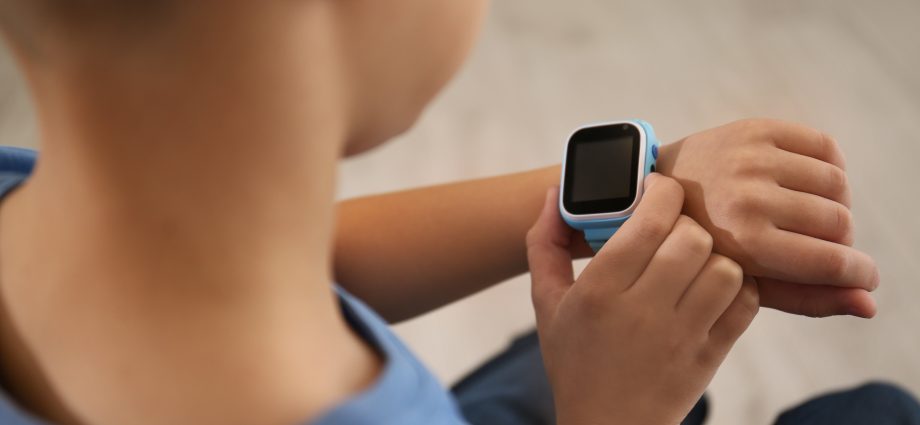WEDNESDAY, Dec. 13, 2023 (HealthDay News) — Connor Heinz started experiencing periods of a racing heartbeat at age 12, but doctors were having a hard time pinning down the problem.
The heart monitor Connor wore was too irritating, and his irregular heart rhythms were happening only once every few months — far too infrequently to catch.
Connor’s doctor thought he knew what the problem was, but he wanted to be sure. So, he did something that a growing number of heart docs are doing — he asked Connor to strap on his mom’s smartwatch.
Smartwatches are being increasingly used by cardiac specialists to help diagnose heart problems in children, researchers report.
A review of medical records at Stanford Medicine Children’s Health found that 41 young patients had arrhythmias detected by a smartwatch, a new study published Dec. 13 in the journal Communications Medicine found.
Of those children, 18 had collected an ECG using their smartwatch and 23 had received a notification from the watch about a high heart rate between 2018 and 2022.
Those readouts prompted doctors to conduct medical workups, from which 29 of the children received new arrhythmia diagnoses, researchers said. In 10 of the children, the smartwatch diagnosed arrhythmias that traditional monitoring methods failed to pick up.
“I was surprised by how often our standard monitoring didn’t pick up arrhythmias and the watch did,” said senior researcher Dr. Scott Ceresnak, a pediatric cardiologist at Stanford Medicine. “It’s awesome to see that newer technology can really make a difference in how we’re able to care for patients.”
A ‘scary’ problem
Ceresnak is Connor’s heart doctor, and Connor was one of the children in the new study.
“At a basketball tryout, he had another episode,” Connor’s mom, Amy Heinz, recalled. “I put the watch on him and emailed a bunch of captures [of his heartbeat] to Dr. Ceresnak.”
The information from the watch confirmed Ceresnak’s suspicion that Connor had supraventricular tachycardia, an abnormally fast heart rhythm caused by a short-circuit in electrical activity of the heart.
Most children with arrhythmias had the same condition as Connor, Ceresnak said.
“These irregular heartbeats are not life-threatening, but they make kids feel terrible,” Ceresnak said in a Stanford news release. “They can be a problem and they’re scary, and if wearable devices can help us get to the bottom of what this arrhythmia is, that’s super helpful.”
The problem often can be cured through a medical procedure called catheter ablation, in which doctors destroy a small and precisely targeted region of heart cells that are causing the electrical misfire.
Connor was successfully treated using catheter ablation and, now 15, is playing basketball for his high school team in Menlo Park, Calif.
A tough-to-spot issue
The study also found smartwatch use noted in the medical records of 73 patients who ultimately didn’t receive any diagnosis of heart rhythm problems.
“A lot of kids have palpitations, a feeling of funny heartbeats, but the vast majority don’t have medically significant arrhythmias,” Ceresnak said. “In the future, I think this technology may help us rule out anything serious.”
Traditional cardiac diagnostic devices aren’t ideal for kids, Ceresnak and his colleagues noted.
Decades ago, kids had to tote around a smartphone-sized device attached to five electrodes that were adhered to the child’s chest, researchers said.
Children now can wear monitors contained in a single sticker placed on their chest, but they sometimes fall off early or irritate the skin.
And even several weeks of continuous monitoring may not capture an erratic heart rhythm, since they occur so unpredictably, researchers said. Kids might go months between episodes.
Making devices kid-friendly
Using a smartwatch still isn’t a completely ideal solution for children, researchers noted.
Existing smartwatch algorithms are based on adult heart patterns and aren’t optimized for kids, who have faster heartbeats and experience different types of abnormal rhythms than adults.
But this paper shows the promise in using even existing smartwatch technology to help detect arrhythmias in children, and suggests that kid-friendly heart-tracking algorithms would be worth developing, researchers said.
Ceresnak and his team plan to conduct a study to further assess how well Apple Watches can detect heart problems in children. The study is open only to children who are already cardiology patients at Stanford Medicine Children’s Health.
“The wearable market is exploding, and our kids are going to use them,” Ceresnak said. “We want to make sure the data we get from these devices is reliable and accurate for children. Down the road, we’d love to help develop pediatric-specific algorithms for monitoring heart rhythm.”
More information
The Cleveland Clinic has more about heart rate monitors.
SOURCE: Stanford Medicine, news release, Dec. 13, 2023
Copyright © 2025 HealthDay. All rights reserved.

